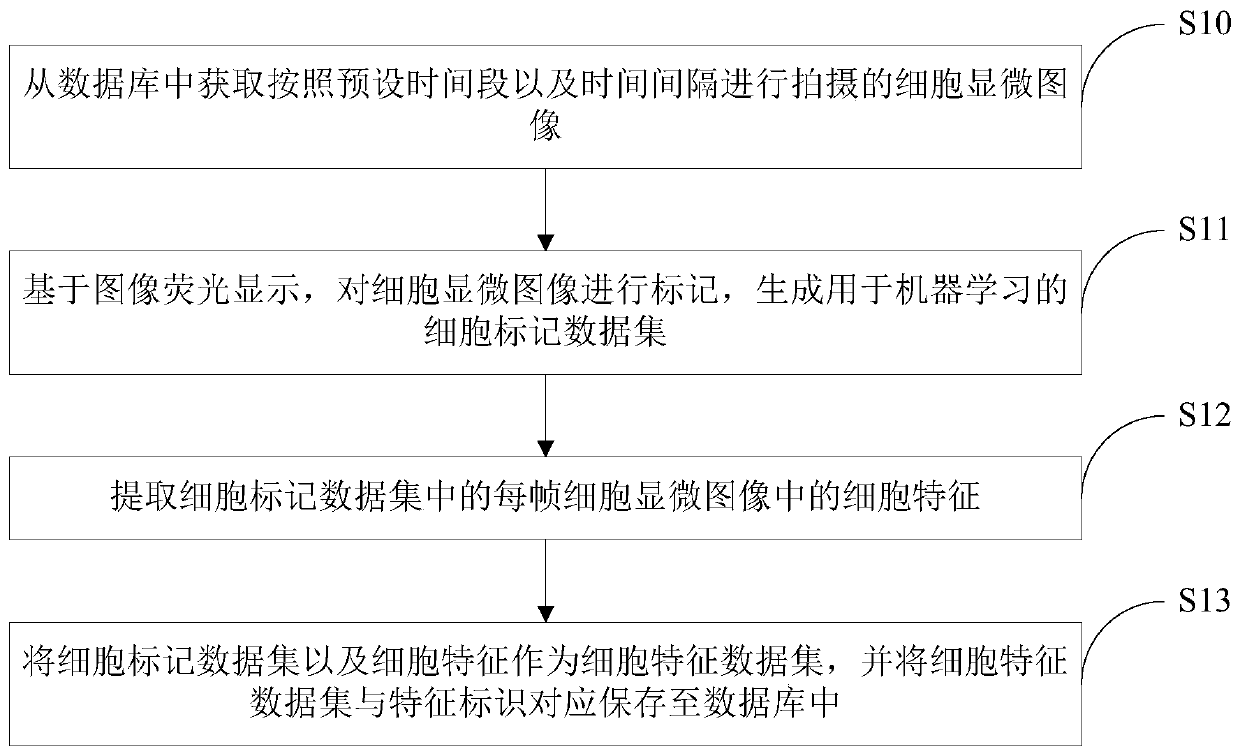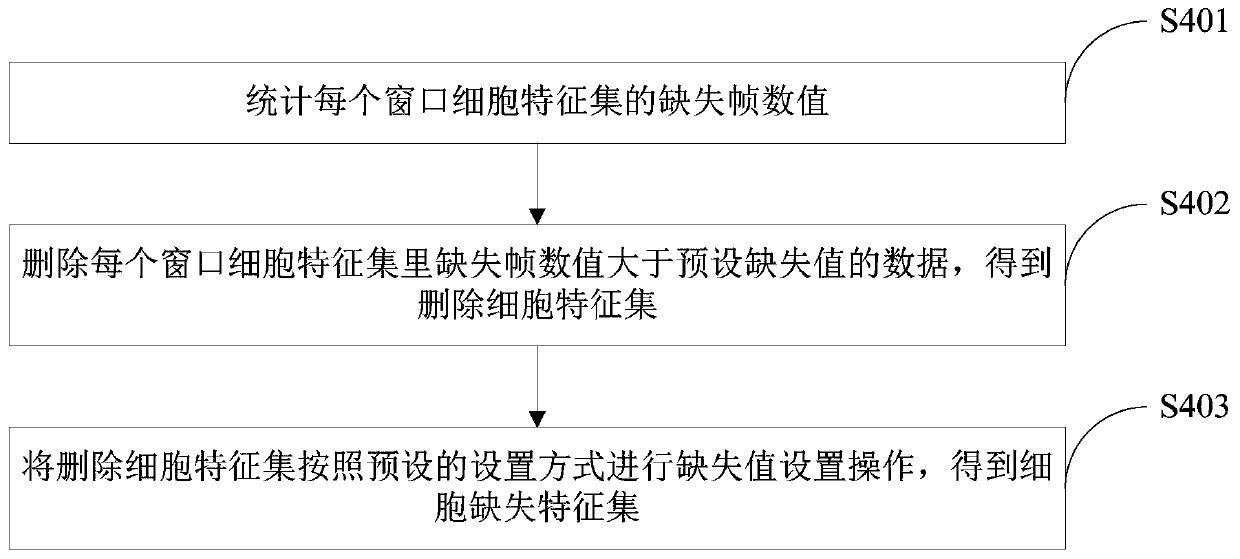Cell identification method and device based on machine learning
A machine learning and cell recognition technology, applied in the field of machine learning, can solve the problem of low recognition accuracy of cell recognition devices, and achieve the effect of reducing computational complexity, low cost and low computational complexity
- Summary
- Abstract
- Description
- Claims
- Application Information
AI Technical Summary
Problems solved by technology
Method used
Image
Examples
Embodiment 1
[0069] According to an embodiment of the present invention, a cell identification method based on machine learning is provided, see figure 1 , including the following steps:
[0070] S1: Receive a feature data acquisition request, and the feature data acquisition request at least carries a feature identifier;
[0071] S2: read the database, and obtain the cell feature data set corresponding to the feature identifier from the database;
[0072] S3: Based on the time window, perform a feature extraction operation on the cell feature data set to obtain a window cell feature set corresponding to each window;
[0073] S4: Perform missing value processing on the window cell feature set to obtain the processed cell missing feature set;
[0074] S5: Use the machine learning algorithm to verify the cell deletion feature set, and obtain the pre-trained machine learning model and the prediction accuracy of the pre-trained machine learning model;
[0075] S6: According to the predictio...
Embodiment 2
[0119] According to another embodiment of the present invention, a cell identification device based on machine learning is provided, see Figure 5 ,include:
[0120] A request receiving module 501, configured to receive a feature data acquisition request, where the feature data acquisition request at least carries a feature identifier;
[0121] The data reading module 502 is used to read the database, and obtain the cell feature data set corresponding to the feature identifier from the database;
[0122] The window feature acquisition module 503 is used to perform a feature extraction operation on the cell feature data set based on the time window to obtain a window cell feature set corresponding to each window;
[0123] A missing feature acquisition module 504, configured to perform missing value processing on the window cell feature set to obtain a processed cell missing feature set;
[0124] The pre-training acquisition module 505 is used to verify the cell deletion featu...
PUM
 Login to View More
Login to View More Abstract
Description
Claims
Application Information
 Login to View More
Login to View More - R&D
- Intellectual Property
- Life Sciences
- Materials
- Tech Scout
- Unparalleled Data Quality
- Higher Quality Content
- 60% Fewer Hallucinations
Browse by: Latest US Patents, China's latest patents, Technical Efficacy Thesaurus, Application Domain, Technology Topic, Popular Technical Reports.
© 2025 PatSnap. All rights reserved.Legal|Privacy policy|Modern Slavery Act Transparency Statement|Sitemap|About US| Contact US: help@patsnap.com



